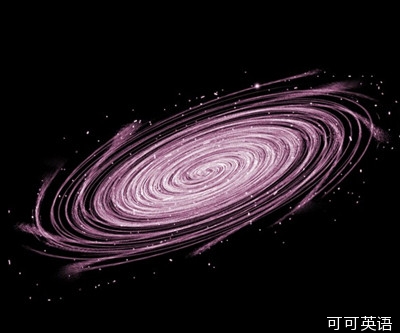In planet formation, as in adolescence, you've got your late bloomers. Such is the case for a nearby star called TW Hydrae. At some three million to 10 million years of age, it's relatively old for a young star. That is, TW Hydrae formed much more recently than our sun but is past the point at which most fledgling stars are still encircled by a massive disk of dust and gas—the stuff of planet formation.
可能在青春期,你屬于那遲開的花朵,某些行星的形成也如此。一顆被稱作長蛇座TW的鄰近恒星也屬于這類情況。長蛇座TW的年齡大約在300萬至1000萬年之間,比一顆新星稍微老一些。也就是說,長蛇座TW的形成晚于太陽,但卻早于大多數初出茅廬的新星,那些新星周圍仍然環繞著大量星塵和氣團,而它們則是最初形成行星的材料。

But a new analysis shows that TW Hydrae retains a surprisingly hefty circumstellar disk, implying that the star could still be forming giant planets. The study appears in the journal Nature.
但是一項新的分析顯示:長蛇座TW周圍仍然環繞著異常巨大的碟狀物,這說明長蛇座TW仍然在形成行星。這項研究發表在《自然》雜志上。
Researchers from the U.S., Germany and the Netherlands pointed the European Space Agency's orbiting Herschel Space Observatory at TW Hydrae to investigate the star's disk. They detected a heavy hydrogen molecule called hydrogen deuteride. From that measurement they were able to estimate the abundance of ordinary hydrogen, which makes up the bulk of the disk.
來自美國、德國和荷蘭的研究人員將歐洲太空總署的赫歇爾空間天文觀測臺指向長蛇座TW,以研究其周圍環繞的碟狀星云。他們探測出了一種叫做氘化氫的高質量氫分子。通過測量,他們能估算出普通氫氣的密度,而普通氫氣是組成星云的主要成分。
The result: TW Hydrae still has enough raw material left to make 60 Jupiters or so, despite its maturity. For aging stars, then, perhaps 10 million is the new 30.
研究結果:在不考慮年齡的情況下,長蛇座TW周圍留下的原材料足夠用來形成大約60個木星。對于老年恒星來說,大概1000萬年只相當于人類的30歲出頭。













